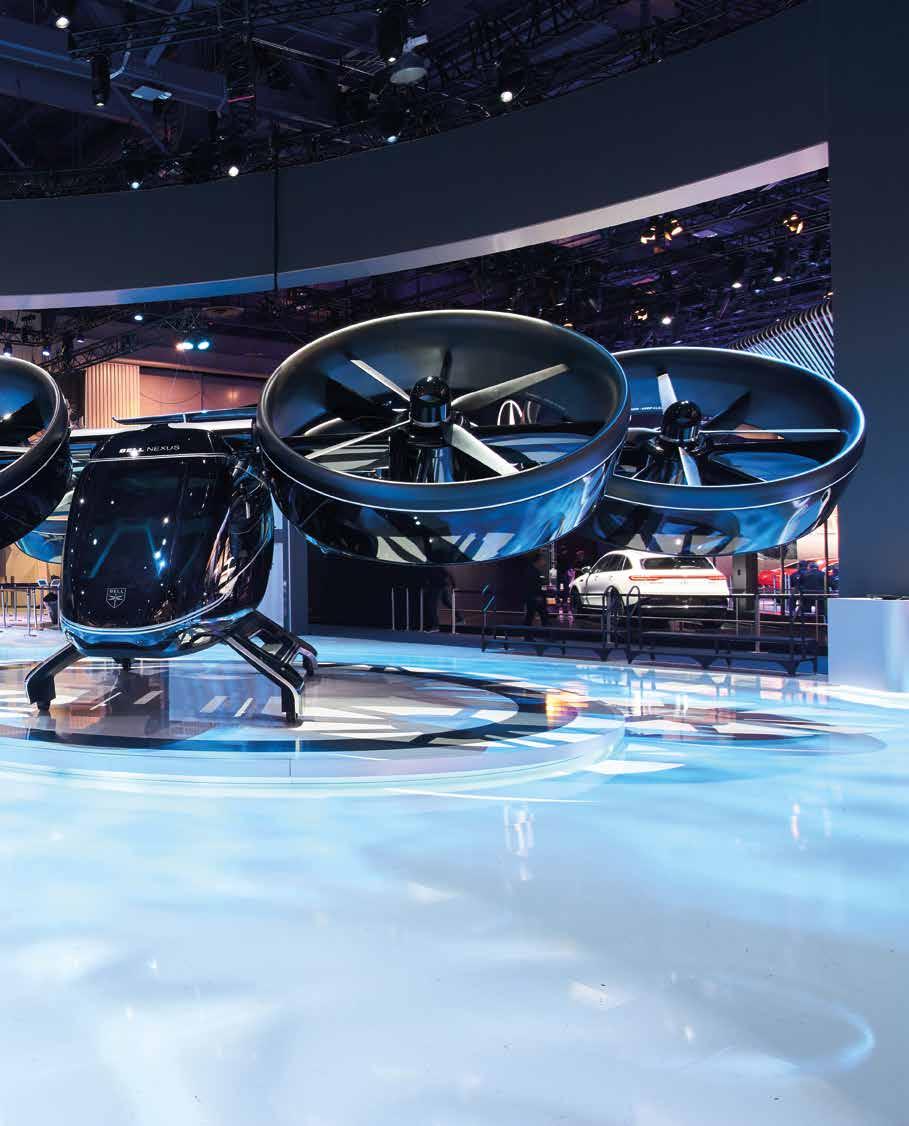











The Textron Group’s rotorcraft brand has developed its electrically-propelled eVTOL Nexus. With limousine-style interiors it looks set to revolutionise urban airborne mobility
 by Sergio Barlocchetti - ph. courtesy by Bell Helicopters
by Sergio Barlocchetti - ph. courtesy by Bell Helicopters
Introduced as a concept at the Consumer Electronics Show 2019, the Bell Nexus is an interpretation of the electric flying vehicle by Bell Helicopters, one of the world’s major rotorcraft producers. Like many other concepts appearing in recent years the design itself was initially simply a sketch, but it was the “who” behind the presentation that made all the difference. At the moment it’s hard to say if this new aircraft type will enjoy widespread success - it’s easier to predict that it will generate sales in the luxury sector, because an exclusive flying vehicle with advanced design elements that can avoid traffic and shuttle between a yacht and dry land, for example, with zero CO2 emissions, transporting a few people several dozen kilometres at most, above all without requiring a pilot to fly it, is sure to be useful and attractive enough to justify its high price. While almost all the companies entering the promising eVTOL sector (vertical take-off and landing electric vehicles) have focussed on cabins with two to four seats, Bell started from a five-seat layout, enabling the company to offer the carrying capacity of a taxi right from the start. It’s clear that it’s still going to take some time, but politicians, investors and technicians all over the world are keen to develop a new market segment. The first of these is EASA, the European Union Aviation Safety Agency, which has just published the regulations for the construction of city vertiports, the infrastructure and air corridors that will cater for these machines.
“The Bell team is blazing the trail that will enable the growth of electric vehicle use and more ecologically-aware technology”, says Mitch Snyder, president and CEO of Bell. Bell is part of the Textron Group, which in March 2022 spent 235 million dollars to acquire the Slovenia-based Pipistrel, the only company to manufacture and sell an all-electric light aircraft. The intention is to exploit the Slovenian company’s know-how and technology (financed in part by the EU) and transfer this to the wider aviation industry. Rob Scholl, head of Bell’s electrical aviation division, has admitted that the Nexus programme is not yet an industrialscale project, and has confirmed that the company will not be bringing a eVTOL passenger aircraft to the market until it is clear how and where it can be used. However, he also says that “We have been working on Nexus for five years and it’s been a useful way of demonstrating the technology and stimulating market feedback. We now have a clear vision of the technological road map to follow, and we’ll continue to invest while still waiting for batteries to evolve further”. Airbus, Bell’s direct competitor, has also confirmed that eVTOL will be a new type of aviation, as in late September 2021 the company presented its version of a four-passenger aircraft called CityAirbus NextGen. In other words, eVTOL craft are now a certainty and will at first be part of the luxury sector – but not before the end of the decade. www.bellflight.com
